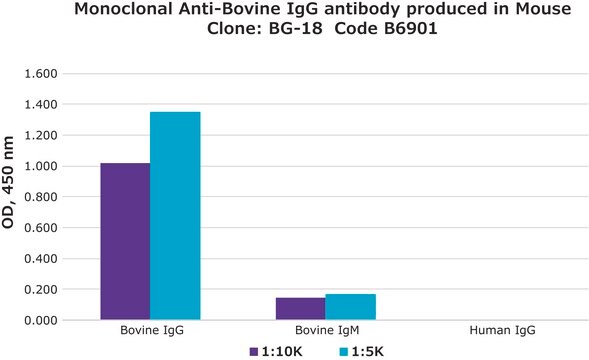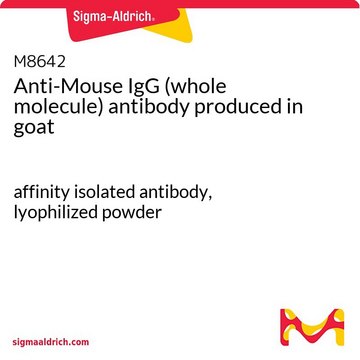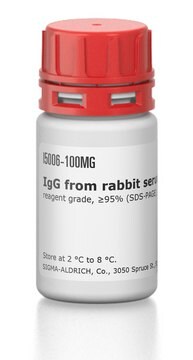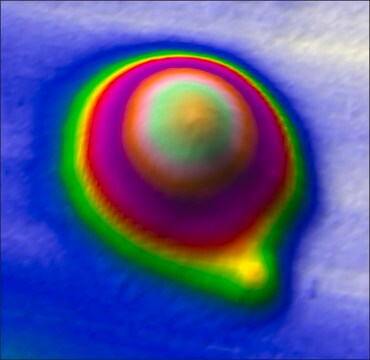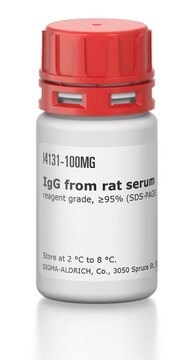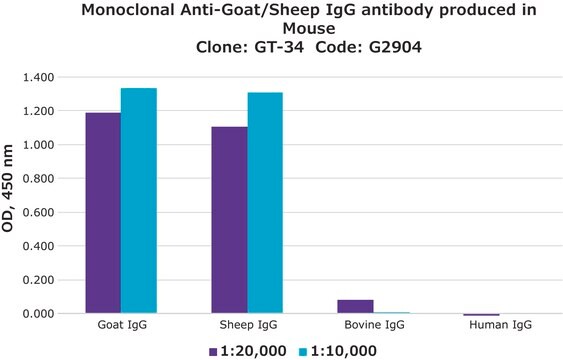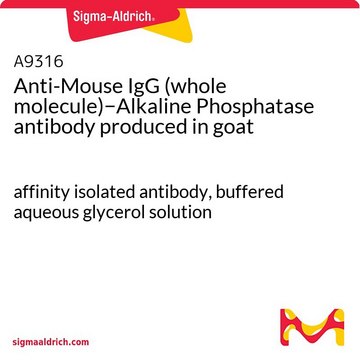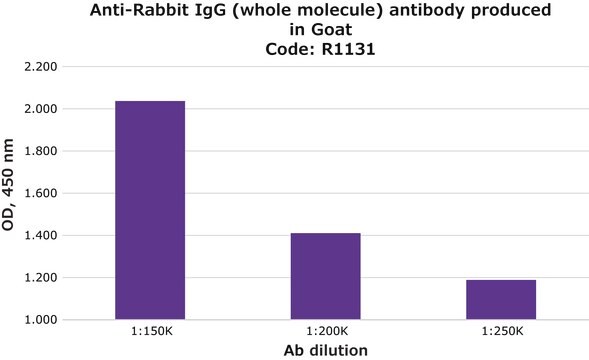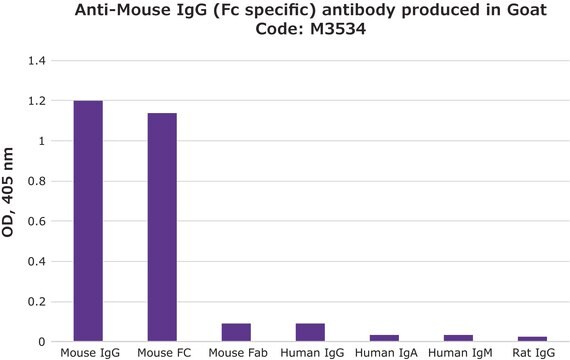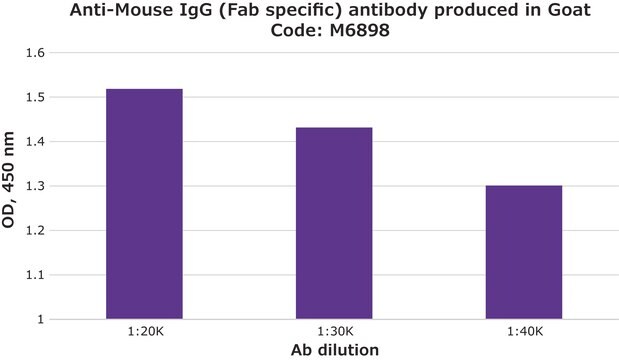M5899
Anti-Mouse IgG (whole molecule) antibody produced in goat
whole antiserum
Sign Into View Organizational & Contract Pricing
All Photos(1)
About This Item
Recommended Products
biological source
goat
conjugate
unconjugated
antibody form
whole antiserum
antibody product type
secondary antibodies
clone
polyclonal
contains
15 mM sodium azide
technique(s)
indirect ELISA: 1:70,000
quantitative precipitin assay: 3.2-4.8 mg/mL
shipped in
dry ice
storage temp.
−20°C
target post-translational modification
unmodified
Looking for similar products? Visit Product Comparison Guide
General description
Immunoglobulin G (IgG) belongs to the immunoglobulin family and is a widely expressed serum antibody. An immunoglobulin has two heavy chains and two light chains connected by a disulfide bond. It is a glycoprotein. IgG is a major class of immunoglobulin. Mouse consists of five immunoglobulin classes- IgM, IgG, IgA, IgD and IgE. Mouse IgG is further divided into five classes- IgG1, IgG2a, IgG2b and IgG3.
Specificity
The antiserum is determined to be immunospecific for mouse IgG by immunoelectrophoresis (IEP) against normal mouse serum and purified mouse IgG.
Application
Anti-Mouse IgG (whole molecule) antibody produced in goat has been used as secondary antibody in:
- immunoblotting
- immunohistochemistry
- proteomic microarrays
Anti-Mouse IgG (whole molecule) antibody produced in goat has been used in:
- the preparation of immunochromatography strips for magneto-enzyme lateral flow immunoassay
- immunochromatography
- MYCN DNA-binding analysis (ChIP-seq)
Applications in which this antibody has been used successfully, and the associated peer-reviewed papers, are given below.
Chromatin immunoprecipitation (1 paper)
Chromatin immunoprecipitation (1 paper)
Biochem/physiol Actions
IgG antibody provides protection from infections caused by bacteria, fungi and viruses. Maternal IgG is transferred to fetus through the placenta that is vital for immune defense of the neonate against infections.
Immunoglobulin G (IgG) helps in opsonization, complement fixation and antibody dependent cell mediated cytotoxicity.
Quality
The antiserum has been treated to remove lipoproteins.
Physical form
Supplied as a liquid containing 15 mM sodium azide as preservative.
Storage and Stability
For continuous use, store at 2-8 °C for up to one month. For extended storage, the solution may be frozen in working aliquots. Repeated freezing and thawing, or storage in "frost-free" freezers, is not recommended. If slight turbidity occurs upon prolonged storage, clarify the solution by centrifugation before use.
Disclaimer
Unless otherwise stated in our catalog or other company documentation accompanying the product(s), our products are intended for research use only and are not to be used for any other purpose, which includes but is not limited to, unauthorized commercial uses, in vitro diagnostic uses, ex vivo or in vivo therapeutic uses or any type of consumption or application to humans or animals.
Not finding the right product?
Try our Product Selector Tool.
Storage Class Code
10 - Combustible liquids
WGK
nwg
Flash Point(F)
Not applicable
Flash Point(C)
Not applicable
Choose from one of the most recent versions:
Already Own This Product?
Find documentation for the products that you have recently purchased in the Document Library.
Customers Also Viewed
R Holtappels et al.
Journal of virology, 74(4), 1871-1884 (2000-01-22)
Several early genes of murine cytomegalovirus (MCMV) encode proteins that mediate immune evasion by interference with the major histocompatibility complex class I (MHC-I) pathway of antigen presentation to cytolytic T lymphocytes (CTL). Specifically, the m152 gene product gp37/40 causes retention
David J Duffy et al.
Oncotarget, 7(37), 60310-60331 (2016-08-18)
Wnt signalling is involved in the formation, metastasis and relapse of a wide array of cancers. However, there is ongoing debate as to whether activation or inhibition of the pathway holds the most promise as a therapeutic treatment for cancer
The Laboratory Rat (2005)
Tien V Tran et al.
PeerJ, 7, e7779-e7779 (2019-10-04)
Dengue infection represents a global health issue of growing importance. Dengue non-structural protein 1 (NS1) plays a central role in the early detection of the disease. The most common method for NS1 detection is testing by lateral flow immunoassays (LFIAs)
Natascha Krömmelbein et al.
Viruses, 8(2) (2016-02-06)
The human cytomegalovirus (HCMV) replicates to high titers in primary human fibroblast cell cultures. A variety of primary human cells and some tumor-derived cell lines do also support permissive HCMV replication, yet at low levels. Cell lines established by transfection
Our team of scientists has experience in all areas of research including Life Science, Material Science, Chemical Synthesis, Chromatography, Analytical and many others.
Contact Technical Service
